A Metal Gear Solid Experience
What it's like to play the MGS games for the first time in 2023
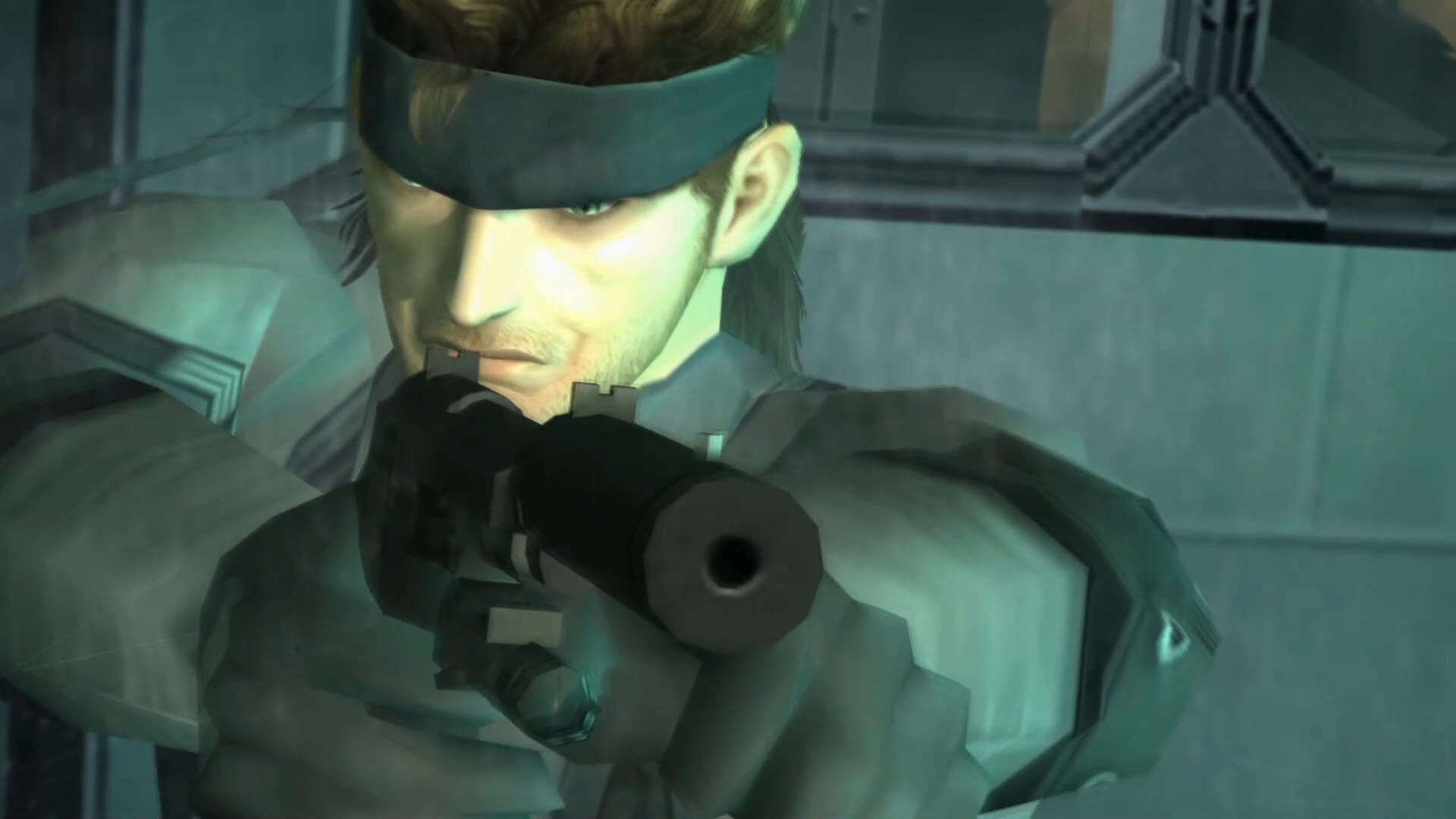
Somehow, despite playing video games consistently for the last 25 years, I have never played the Metal Gear Solid series. I know all about them, I know about all the memes, I know who Solid Snake is, I know how they continue to nerf the poor man's buttocks, and I know the shockingly iconic berring(!) noise that happens when you're spotted, but I never actually sat down and played any of the games. I've had literally every iteration of PlayStation console, of which (with the exception of the PS5) has each had at least one monumental Metal Gear Solid game accompanying it. In spite of this, I was never able to get my hands on any of the mainline series to try. These games practically defined a generation and became synonymous with the name "PlayStation." It was a downright travesty that I'd never tried them. It isn't every day that a relatively (by Western standards) obtuse and convoluted Japanese property gets such a large foothold in the whole of the West, and Metal Gear Solid did it with gusto. As such, When Konami announced they were releasing a Metal Gear Solid collection with the first 3 mainline games all in one convenient package, along with the newly announced Metal Gear Solid 3 remake, I decided it was finally time to sit down and give these games the time of day they so desperately deserved.
I know that the Metal Gear Solid Collection disappointed many of the series' long-standing fans, and I understand why. It is about as bare-bones of a collection as you can get. That being said, picking it up on Switch was the most accessible way for me to easily work my way through these three full-length campaigns and complete the games within a timely manner. No, it didn't even hit consistent 30 fps, and yes, the cartridge itself only held the extra bits of the collection other than the games itself, but ultimately it was exactly what I needed to chip away at these games at my leisure. That, and bringing along 3 of the best video games ever made with me everywhere I went is a childhood dream come true. I methodically made my way through these respected pieces of gaming sovereignty for the first time in 2023, and it took me places I never expected.
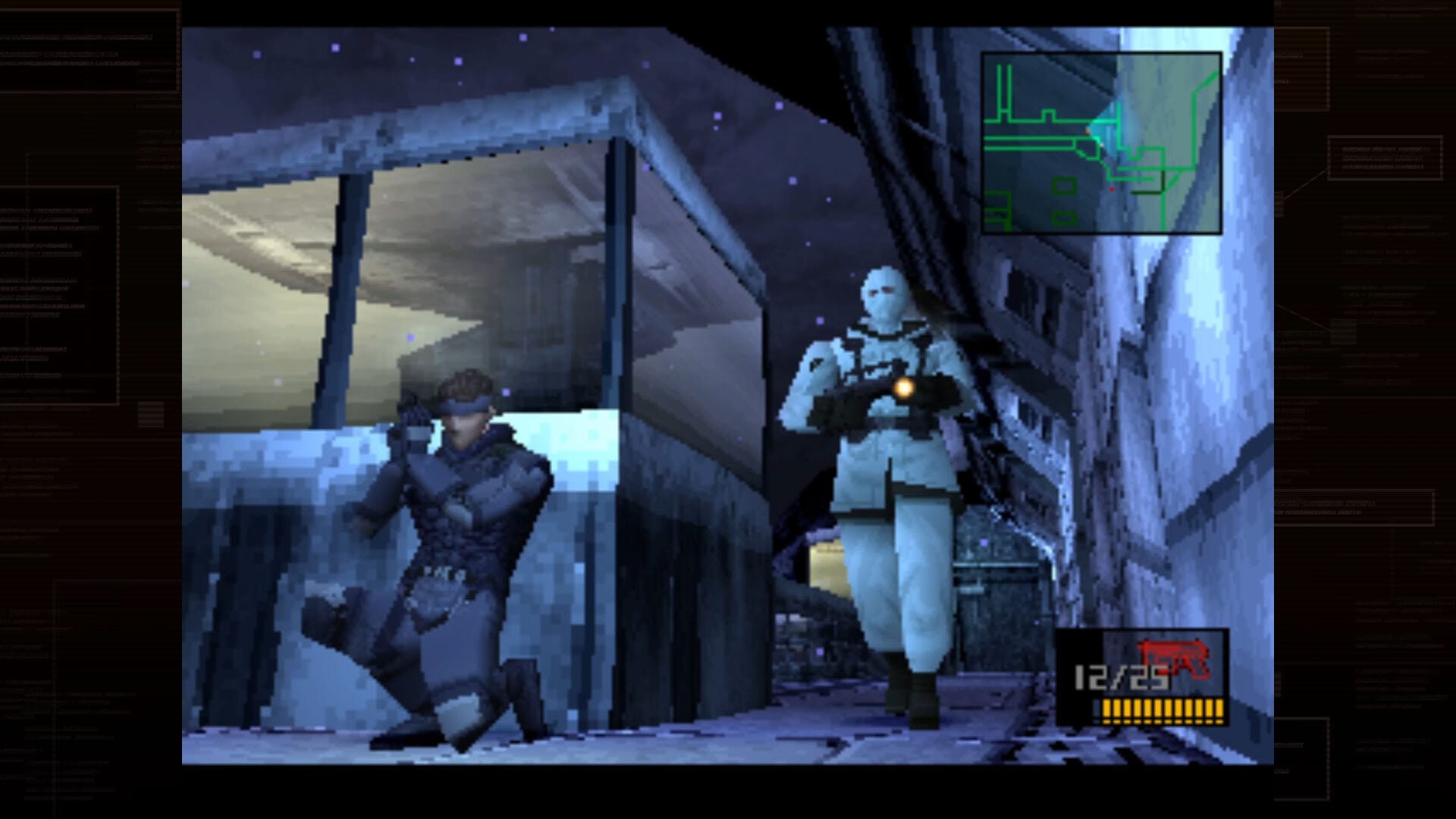
Metal Gear Solid
PlayStation
When you think of the PlayStation, what pops into mind? For some of you, I bet it's Spyro the Dragon. For others, I'll bet it's Crash Bandicoot. For so many more, however, I'd bet my bottom dollar that the iconic red logo with that incredible pencil-sketch art style flashed into your mind, accompanied by large bold letters that read, "Metal Gear Solid."
It was a landmark title that helped boost the PlayStation's reputation as a serious contender in the gaming market. Released in 1998, Metal Gear Solid is actually the third game in the Metal Gear series, following Metal Gear Solid 2: Solid Snake in 1990, released for the Japanese-only MSX2 computer. The first two games are monumental in their own right, but the world had never seen anything like Metal Gear Solid before. Hideo Kojima (the game's director) is known for being a stickler for details, and he and his team used every ounce of hardware the humble PS1 had at the time to create one of the most unique and cinematic experiences seen on that system. Above all else, that's what really blew me away about Metal Gear Solid – the cinematography of it all. Despite being over 20 years old and on a system that is definitely starting to show its age, the original Metal Gear Solid keeps you hooked through the entirety of its runtime. Somehow, Kojima's crew was able to get palpable emotion out of what appears to be about 14 polygons worth of rendered character and extremely basic wire frame animation. Each cut scene is rendered in-game, which is a huge plus when it comes to PS1 games. Unfortunately, not all games from this period have this benefit, and the prerendered cut scenes become a nightmare inducing mishmash of uncanny valley horrors. MGS is spared this by the smart choice to keep the visual aspect consistent throughout, so (despite the cardboard-like people) it never becomes jarring.
The majority of this is owed to the fact that Metal Gear Solid's story and character work would be top-notch even by today's standards. Solid Snake must infiltrate a terrorist base in Alaska to attempt to neutralize a nuclear threat (the titular Metal Gear) while attempting to rescue the hostages being held there. The premise is pretty straight forward, but the twists and turns that befall Snake in his mission are numerous and exciting. To top it off, the voice cast for Metal Gear Solid is absolutely stacked. In the English version, which is what I played, you have David Hayter's gruff dulcet tones and dry delivery bringing Solid Snake to life, you have Christopher Randolph perfectly cast as the meek and timid man-in-the-chair Otacon, and you have Jennifer Hale and Paul Eiding as the voices in your ear guiding you through everything. Every voice line delivery is campy, hammy, and fun, but the story is never afraid to buckle down and tug on your heartstrings. The voice acting and story are so well done that you become legitimately invested in the PlayStation monstrosities in front of you, and that is no easy feat. The game does an excellent job of continuing the story forward naturally, and I was extremely impressed by its ability to know where you are and what you're doing at any given time. Calling someone on your codec means you'll get a piece of relevant and helpful information regardless of where you are throughout the game, showcasing all of the different voice lines that had to have been recorded for each area, many of which you won't even hear. A feat like that would be impressive in a game releasing right now, let alone in 1998.
The bosses are iconic and the iconography of Metal Gear Solid cannot be denied. If you've been on the internet, chances are you've seen a reference or a meme in relation to Metal Gear Solid due to how popular the game was at the time and how much it still speaks to players around the world. To this day, the game stands the test of time as a true testament to what can be accomplished with enough talent, time, and faith. I mean, come on, it's the Metal Gear Solid!
The first two games are monumental in their own right, but the world had never seen anything like Metal Gear Solid before.
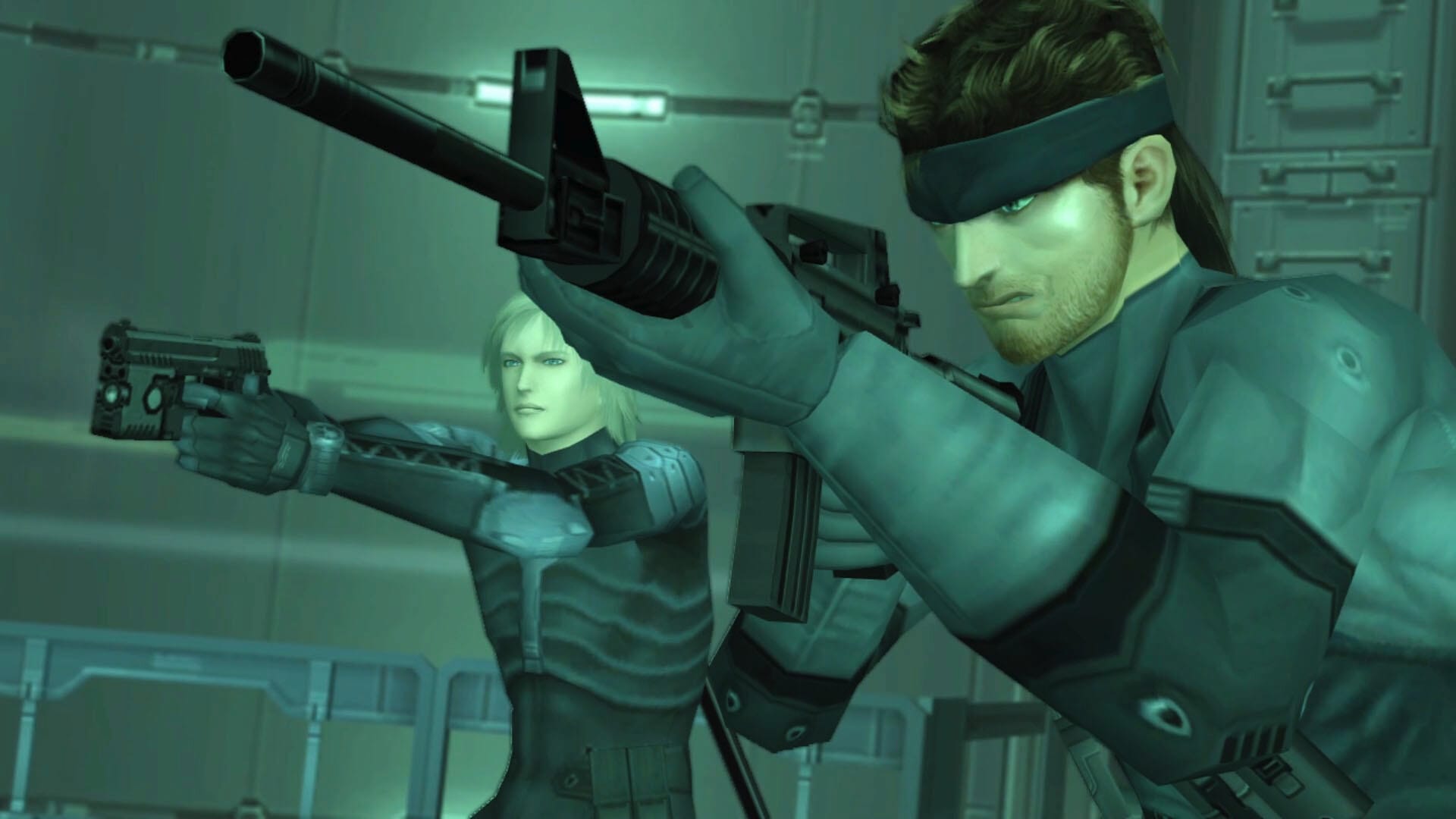
Metal Gear Solid 2: Sons of Liberty
PlayStation 2
After the runaway success of Metal Gear Solid, there was a lot riding on Metal Gear Solid 2: Sons of Liberty (MGS2) to be one of the best follows ups the medium of interactive entertainment has ever seen. So how does Kojima, the mad-lad, decide to tackle this Herculean task? By implementing one of the most notorious rug-pulls in the history of video games.
The game starts with you taking the control of Solid Snake, the protagonist from MGS (now in full mullet glory) while he infiltrates a tanker carrying – you guessed it – another Metal Gear. The ship is soon pirated by a Russian military force, familiar faces appear, things explode, and then the real game begins. Suddenly, you are no longer playing as the cool, calm, collected rough-and-tumble heartthrob Solid Snake, and instead are playing as a spiky-haired Kingdom Hearts reject code named "Raiden." Raiden is everything that Solid Snake isn't: he's a green special operations soldier fresh out of VR training, with this being his first field mission. He's brash, combative, uncooperative, and, quite frankly, whiny. It's extremely jarring to say the least, especially when you start the game playing as Snake. Even though I was completely aware that I wasn't going to play as Snake in MGS2, even though this particular trick was spoiled for me literally decades ago, I was still incredibly surprised at just how unlikable Raiden is at the beginning of the game.
It forces the player to start as green as Raiden is and learn what it takes to be a soldier in this environment along with him. While he still may not be my favorite character in the series, by the time the credits rolled I was much more in favor of Raiden than I was when I first saw his stupid white hair flow into screen. And Raiden isn't the only interesting new character to be introduced during the runtime, and just like the original game, every character is unique, with each line of dialogue being delivered in a hammy and wonderfully memorable way.
Honestly, everything in MGS2 seems beefed up and improved over MGS. The controls are tighter and allow for a greater range of movement, enemy AI is a lot smarter and will call in backup if they see something that worries them, and the story becomes much more intricate and fleshed out. MGS2 isn't afraid to kill off a few characters either, creating some interesting tension, as well as establish that not everything from MGS is exactly what it seems. It cranks the weird up a notch as well, which each of the bosses of the terrorist organization you're trying to stop being stranger than the last. There were some unexplained paranormal elements within the first game, but in MGS2, every boss has something utterly surreal about them that makes each one of them memorable and strange. Much of the game is played alongside Solid Snake as well, and being able to see what he can do without playing as him honestly makes him so much more of an interesting character than if you would have played him through the whole game. He just has an effortless cool to him that's instantly addictive.
The best part about MGS2, however, is the story. Establishing exactly what the Sons of Liberty are along with who Raiden is and where he comes from are equal parts intense and intriguing. The fact that Kojima's team could make a game based entirely around one singular location this interesting deserves recognition in itself. There is a particular speech at the very end of the game in regards to AI that's unbelievably poignant in today's day-and-age, and while I don't agree with all of Kojima's creative decisions, the man has an uncanny ability to predict the future of technology. Even if you have no intention of ever playing MGS2, I implore you to check out the speech made by Colonel Campbell towards the end of the game, and try to keep in mind it was written over 20 years ago. I got legitimate goose bumps when I heard it.
I can't even imagine how much pressure Kojima and his team along with Konami were under after the massive success of MGS when they were coming up with MGS2. There was such a huge margin for error, and they did something absolutely incredible with MGS2. The fact that the bait-and-switch is still debated to this day just goes to show how memorable of an experience MGS2 was and still is.
Suddenly, you are no longer playing as the cool, calm, collected rough-and-tumble heartthrob Solid Snake, and instead are playing as a spiky-haired Kingdom Hearts reject code named "Raiden."
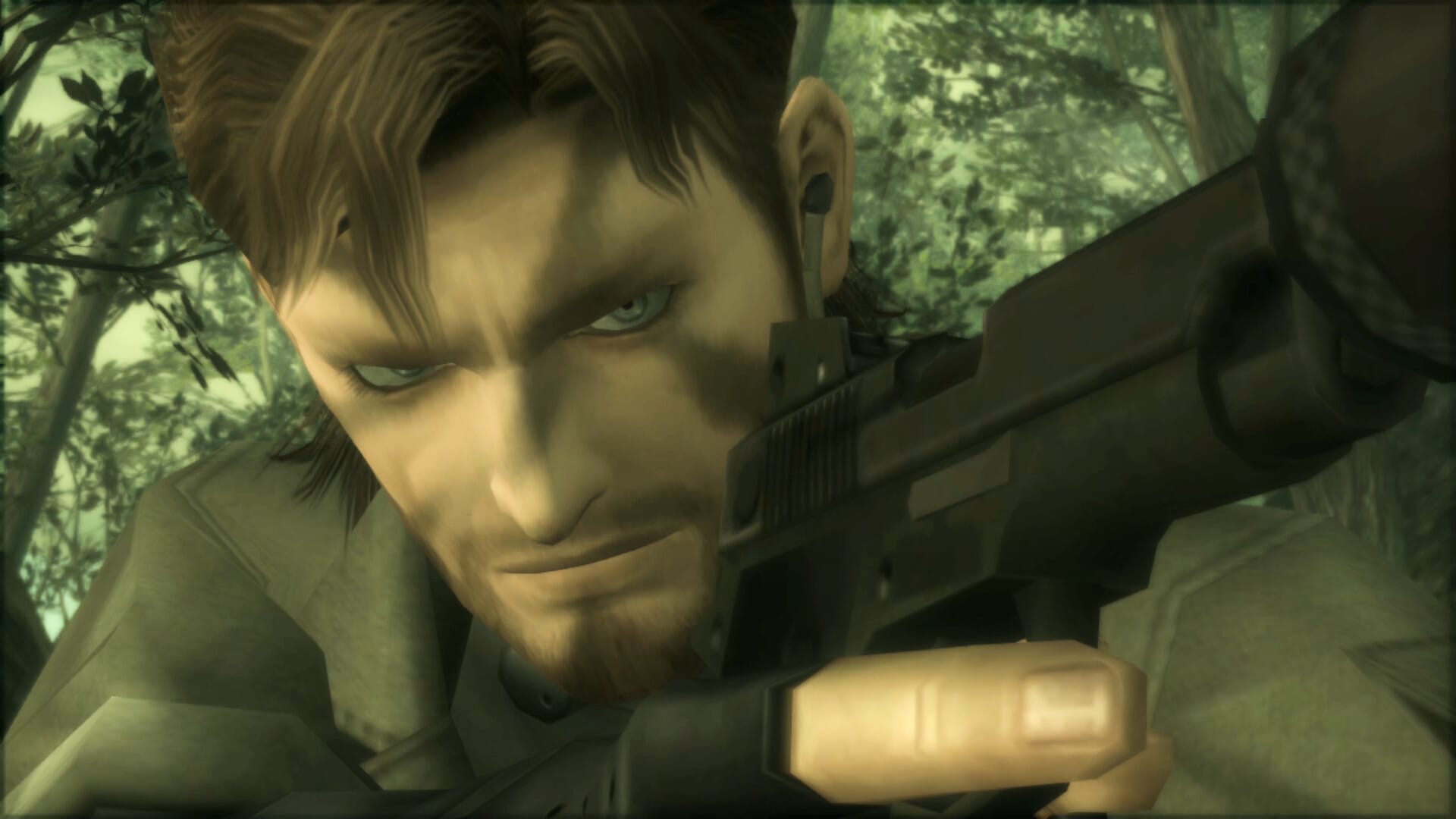
Metal Gear Solid 3: Snake Eater
PlayStation 2
Metal gear Solid 3: Snake Eater (MGS3) came out three years after MGS2, and was in the later stages of the PS2's life cycle. There are many who believe that MGS3 is not only the best game to come out of the Metal Gear series, but that it's one of the best games ever made. Just like with MGS2, MGS3 shakes up the formula in a variety of interesting ways. The story is a prequel setting up Big Boss, who is the man who Solid Snake is a clone of. On top of the story shift, gone are the fixed top-down camera angles of the previous games in favor of a more modern behind-the-back third person experience. A new survival mechanic was introduced, forcing Snake to hunt down prey and eat them raw (including snakes, hence the name.) Instead of taking place in a futuristic high-security advanced technology military base or oil tanker, MGS3 takes place in the jungles of Russia, and Russia doesn't have traditional jungle, adding another layer of intrigue. MGS3 introduced a camouflage system, allowing players to swap out Snake's uniform and face paint on a whim to better hide from enemies in different environments. Instead of just eating rations to regain health, Snake must apply field medicine to himself to keep from succumbing to his wounds. More characters are introduced with much more in-depth stories going along with them. The list goes on.
MGS crawled so MGS2 could walk, and MGS2 walked so MGS3 could run. Everything the Metal Gear series is known for is cranked up to 11 in MGS3. The cut scenes and animation are even more ambitiously cinematic than in MGS2, with long, drawn out shots used to show exactly how gorgeous the PS2 could be. While it may be dated by today's standards, the facial animations and overall grittiness within MGS3 still looks excellent, showing a densely detailed Russia. The story is totally enrapturing, with characters equally as despicable and likable in spades. It is by far the best iteration of Snake as well, showing how the legendary soldier got his code name and prove why he's the household gaming name we all know and love. All of the characters are at their best in MGS3 and feel the most grounded despite their ridiculous premises. Revolver Ocelot is a young and cocky Russian officer looking to prove himself to his government. The Boss is an incredibly complex character who constantly shows why everyone calls her The Boss. Each of the Cobras you have to face down is more ridiculous than the last, with The Pain – who can literally control bees – and The End – a geriatric sniper who's eyeballs pop out of his head to see better who can canonically die of old age – being particularly strange. The only person in the entire game I wasn't crazy about was Volgin, the main antagonist, as he is a bit one-note, but his performance is so theatrical and histrionic you can't help but enjoy when he's on screen. The voice acting is as great as ever, with David Hayter really finding his own as the voice of Snake.
My favorite part about MGS3, however, is the unbelievable attention to detail. Wading into water dampens your clothes up to the point where you were submerged, your stamina will drain faster if you're in higher altitudes and slower if you have adrenaline, different animals you eat will cause you to get sick if you aren't careful, wounds must be tended to (albeit through a menu screen) in a way that makes sense, enemy AI is intensely smart, checking every nook and cranny for you before calling off their search, the same model of gun you receive from different people will look different since they're different weapons, you can destroy ammo and food supply depots to greatly change the behavior of enemies, first person mode is affected when Snake loses his eye. It's baffling that they were able to fit all of this detail into a PS2 game from twenty years ago. I can literally fill an entire story with the tiny bits of details from MGS3 that make the game such a stand out hit. To this day, no one does attention to detail quite like Kojima and his team, and MGS3 really feels like the first time they were able to spread their wings and show off what they could do. It took me a little while to really click with MGS3, but when I finally did, I started to easily see why it has the reputation it does. It earned every inch of it.
MGS crawled so MGS2 could walk, and MGS2 walked so MGS3 could run. Everything the Metal Gear series is known for is cranked up to 11 in MGS3.
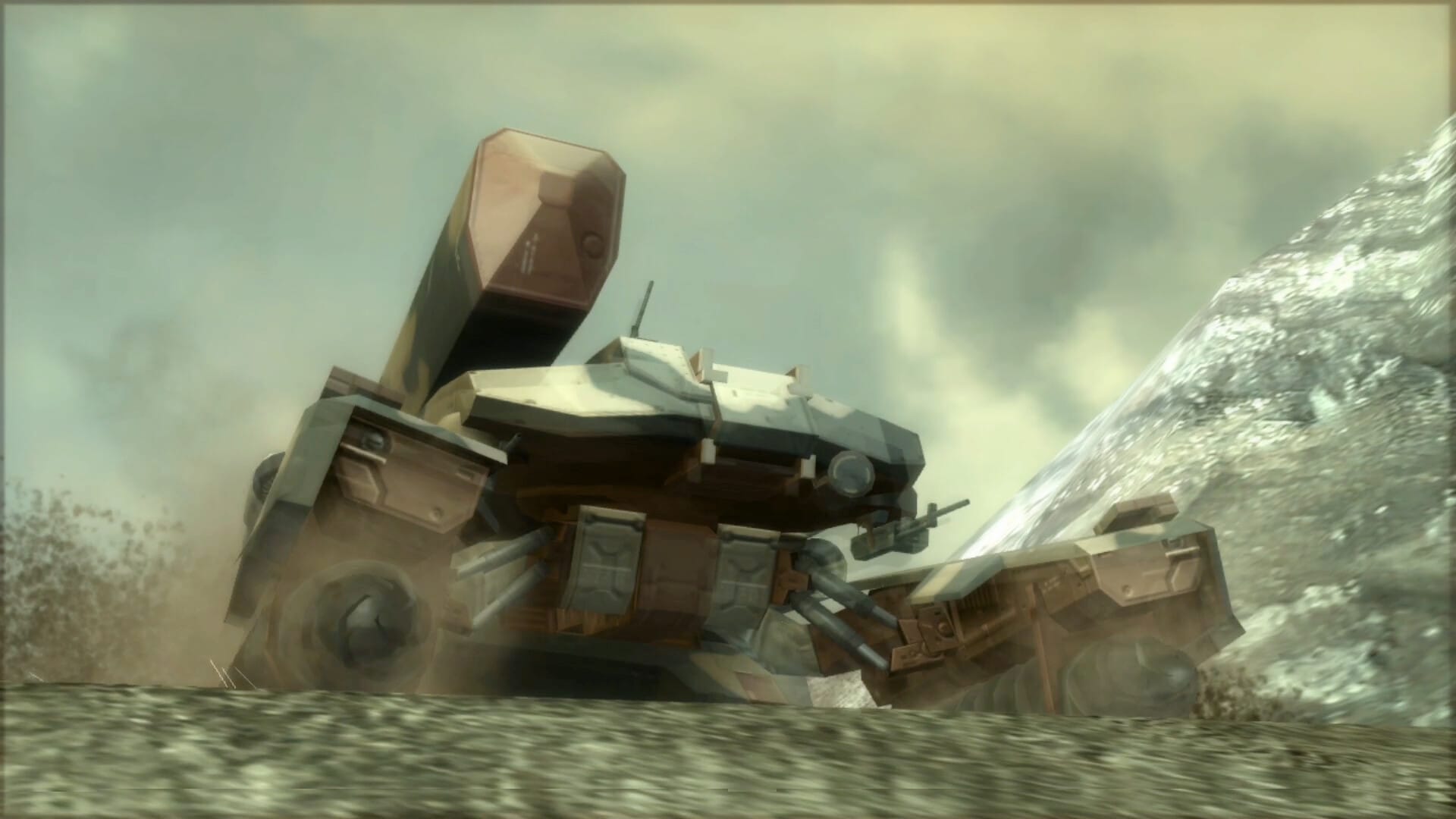
The Not-So-Good
Now, here is where a few people may get angry. Despite the amazing time I had with the Metal Gear Solid Collection, I think that maybe some of the praise might be just a little bit of nostalgia coloring in the more questionable aspects of the Metal Gear franchise. Don't get me wrong, the negatives pale in comparison to the positives, but I struggled through quite a bit of the MGS series and want to highlight some of these aspects for the sake of honestly.
To put it bluntly, the games control terribly.
I know that they're old games, and they were around during a time when developers were really starting to get a feel for how characters should move through 3D space, but whew boy did I struggle to get my footing with the controls. There's some serious ludo-cognitive dissonance happening when Snake is dodging missiles and throwing bodies around in the cut scenes like a super hero, but he seems to be totally unable to crouch and move at the same time during gameplay. I can't tell you the amount of times I went up to cover, crouched down to try to stick to it, only to be a few inches too far away, causing Snake lay down on his belly with his feet sticking out of the cover like a toddler playing hide-and-seek, which would inevitably garner the attention of the guard and have to shoot my way out. Or how about when you go to duck behind cover but are moving just a little bit too fast so you dodge-roll like you're fighting an Elden Ring boss right out into the open where guards spot you immediately? Not to mention how unnecessarily cumbersome it is to actually aim your weapon in first person mode, with multiple button presses and aiming with the left stick only the beginning of the problems. The camera constantly fights the controls as well, with the direction used to stick to the cover and stay stuck to it shifting when Solid Snake/Raiden/Snake actually ducks down, causing you to inevitably move into a direction you didn't mean to. Maybe it's a skill issue, and maybe I need to just "git gud," but the Metal Gear Solid control scheme is one of the most obtuse control systems I've had to wrap my head around in a shooter. I got used to it eventually, and even started enjoying it towards the end of MGS2 and 3, but if it takes multiple hours for me to start understanding how to put my gun away without firing it on accident, maybe the controls are a little too complicated for their own good.
Speaking of obtuse, how the game even operates is totally up to the player to to discover. While this can be a really fun and immersive way to make a player feel like a fish out of water such as with games like Breath of the Wild, it sometimes feels utterly random whether or not you'll ever learn this information from the people who are supposed to teach it to you. I was already in Groznyj Grad in MGS3 when I made a call on my Codec to Major Tom who only then happened to tell me I could interrogate enemies to learn new information from them. That information? Hidden locations of items, hidden radio frequencies, and vital info about the surrounding area and what to expect there, all of which would have been vital in helping me accomplish my task. I had called Major Tom dozens of times up to this point, with him only feeling the need to tell me of this entire game mechanic a mere 2 hours away from the finishing line. I wasn't even entirely sure how CQC worked until after I had fought The Fear, again only because Major Tom felt like telling me about it 5 hours into my run time. I understand the allure and excitement of doing something cool in a video game and going "Wait, how did I do that?", but I kind of figure that when it's established Snake helped invent the damn CQC, the game would tell me about it. Even if this was Kojima's vision, and I'm sure it works super well for some people, it was too obscure for me to truly grasp until far later into the series than I'd like to admit.
There's one more glaring problem in the early MGS games that feels pretty rough when enjoying them today – their depiction of women. There's even a disclaimer at the beginning of each Metal Gear Solid game in the collection stating how some of the games haven't aged well and that they're a product of their time. I didn't even think it was that bad until there was a "hold R1 to stare at breasts" prompt in MGS3, and then a lot more of it started clicking together. It truly is a deplorable way to represent women in general, but it can be a little more easily digested when its remembered these games did come out in the early 2000's, and it slots into that time period perfectly. It can truly be jarring, especially in MGS3 with the way that EVA is depicted. Under no circumstances do I think artists should be censored in what they want their vision to be, and I commend Konami for not removing it from the collection as nothing can be learned from if its ignored, but it still is a weird stain on an otherwise wonderful story. Thankfully Kojima learned that this was no-longer time appropriate and definitely didn't continue that tradition well into the 2010's.
To put it bluntly, the games control terribly.
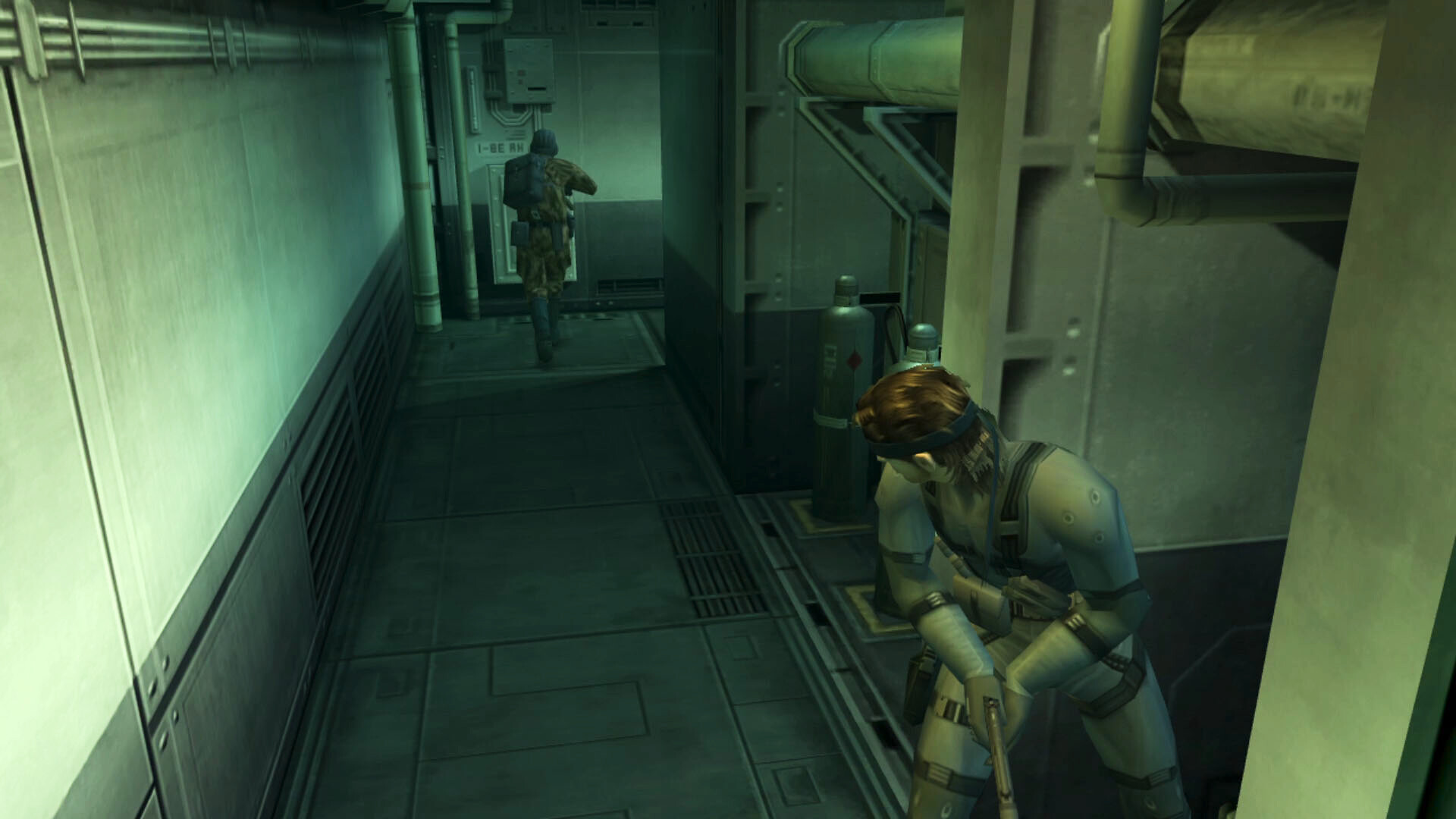
In Conclusion
Ultimately though, and despite what some seething Redditors have posted over the years in opposition of this, none of that matters. The first three Metal Gear Solid games are bonafide gaming royalty, and for fantastic reason. Despite the issues I had with a few aspects of the game, I was consistently blown away into orbit over how much quality is in this series, especially with how old the series is becoming. The PS1/N64 era was when I really started blossoming as a gamer. That being said, If the games don't have a special place in my heart, I find it extremely difficult to bring myself to invest any real time into new games from that time period due to how poorly they've aged. MGS didn't present me with that problem, and because of this I knew from the get-go that this series was something truly special. While it didn't necessarily make its way into my favorite games of all time, it was a true honor and treat to finally be able to experience these games for the first time and see what makes them as renowned as they are. I absolutely will be going back through them in the future, especially if Konami decides to finally get MGS4 out of the purgatory of the PS3 and on modern consoles for the next iteration of the collection, and I know that running through these legendary games again will be nothing but a good experience. Hell, it'll probably be even better.
In fact, they're not legendary, they're straight up prolific. What more do I have to say other than, for God's sake, they're Metal Gear Solid.
